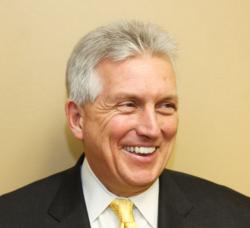Day: July 21, 2016
Why Leadership Matters
Learning From Military Movies
This past Memorial Day, I watched the movie the “Green Beret,” staring John Wayne. In scene after scene, the Duke led his men into and through some very dangerous missions. As I watched the 1968 film, I was reminded that leadership really does make a difference. A little later that day I watched Heart Break Ridge, and again I noticed a leader making a difference.
I said to myself, “Well sure they’d follow, John Wayne. He was their Colonel who commanded them.” That’s true, but the Duke exhibited other relational characteristics that had nothing to do with his rank. In fact, he hand-selected his men, and in so doing demonstrated confidence both in their potential and their abilities. Experiencing the Colonel’s confidence motivated the men to a higher level of performance, because they trusted the Duke and didn’t want to disappoint either the colonel or their fellow soldiers.
Relationships are Key to Leadership
The motivation of the men following John Wayne into battle had very little to do with his position and much more to do with his relationships with them. They were empowered by the Colonel to use their various gifts to help achieve the mission and that helped build trust. Later on, I noticed that the same thing was true of Clint Eastwood in Heartbreak Ridge.
In fact, the motivation of the men in Heartbreak Ridge again had very little to do with the position of Clint Eastwood. He played a Marine Gunnery Sergeant, and his success had a great deal to do with his battle tested experience and the relationships he built with the men. He wasn’t the commanding officer of his unit. The men all served under a 1st Lieutenant who was fresh out of college. Fortunately, though the lieutenant allowed Eastwood’s character both to lead and to mentor him. That trust he exhibited allowed them both to complete the missions successfully and for the 1st Lieutenant to become a leader.
In both movies, the missions could not have been accomplished without the contributions of the team members. However, those individuals would not have been anywhere near as effective, apart from the leader who brought them together and developed them into that team.
Leadership in Real Organizations
Well, you might be tempted to think, that may be true in the movies, but in real life it’s different. But is it? Believe me when I say that in my work as a fundraising consultant I’ve seen many organizations that are far more successful when they have leaders who engage the people around them. How does that happen? Just like the Gunnery Sergeant and the Colonel did, those leaders care about the mission, recruit the right people, believe in those people, know how to motivate church members and/or staff and empower them to contribute.
Leadership Lessons from Hollywood
That all sounds simple, but you’d be surprised at how many organizations don’t have leaders who can or even want to do these things. On the contrary, we find many who don’t. Among other things, our company helps churches that are planning for a capital campaign organize and manage the scope of work. We’ve never had a church campaign fail to achieve its goal, but the ones who have struggled getting to the goal often lack the kind of leadership necessary, either in the senior pastor, elders, deacons or parish council members. Of course the Duke and Clint are unique examples, but if you want to lead effectively, a good place to start is to follow their examples.

